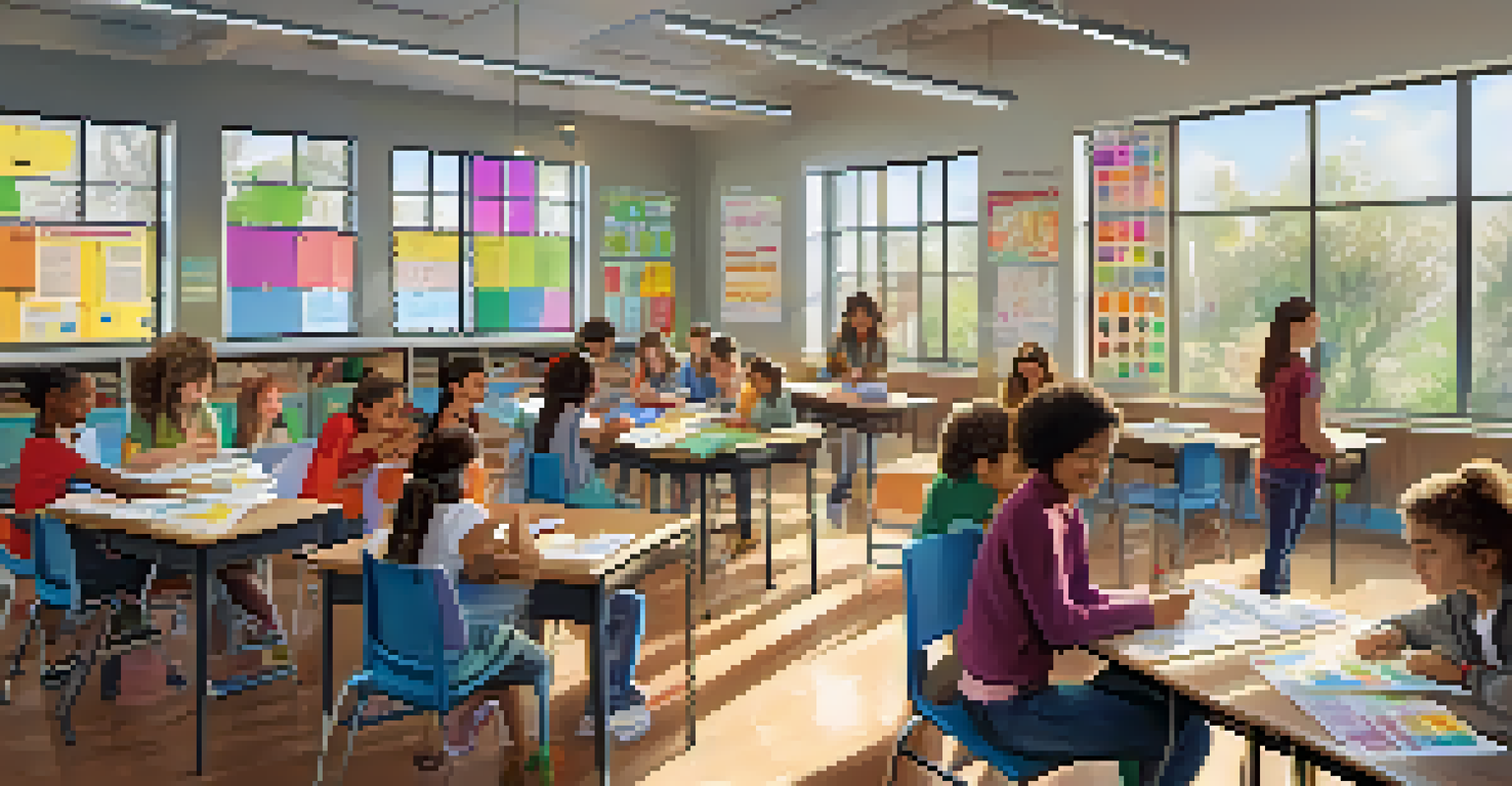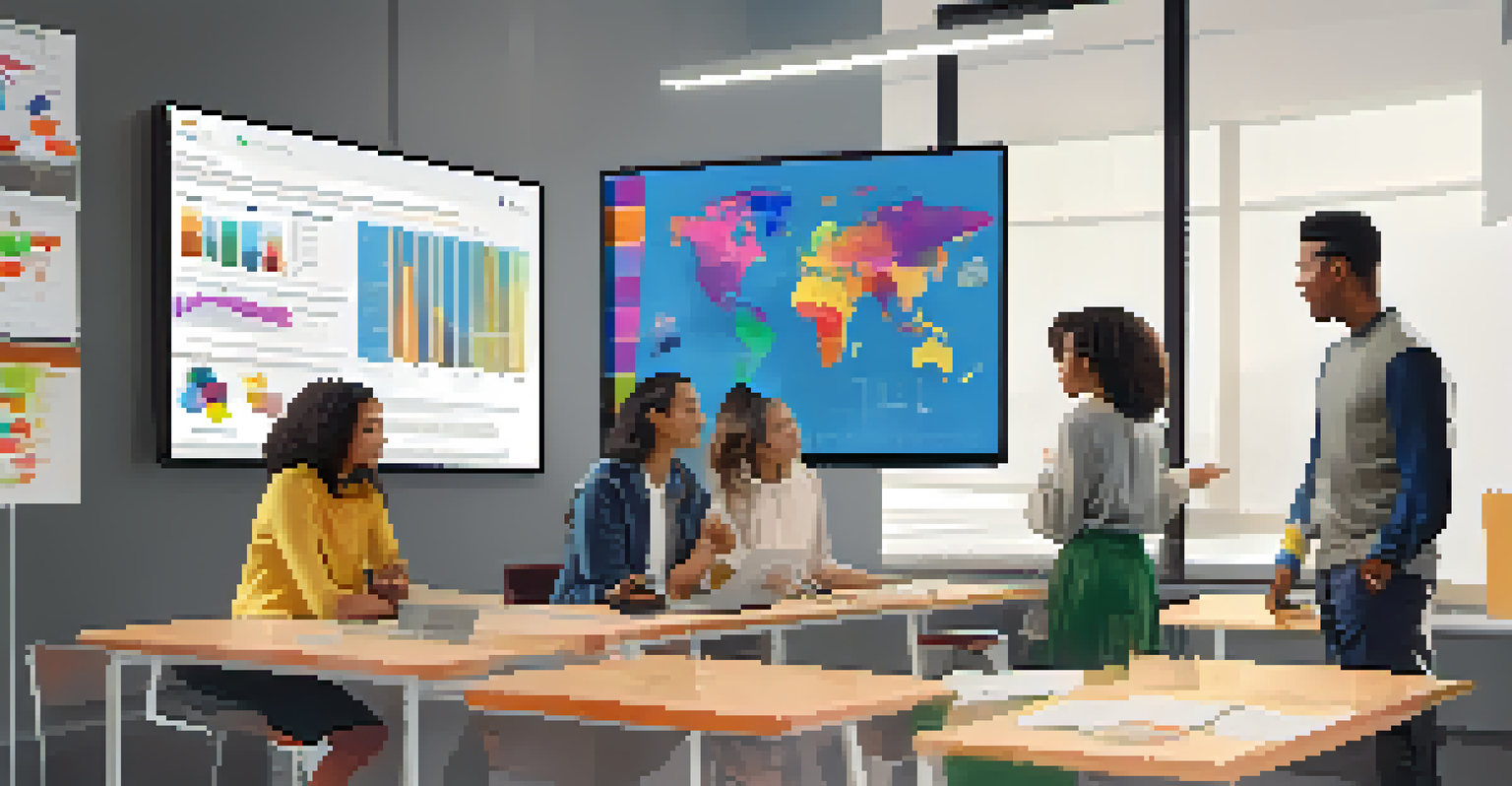Assessing Students in Project-Based Learning Environments

Understanding Project-Based Learning and Its Benefits
Project-Based Learning (PBL) is an educational approach that emphasizes hands-on, real-world projects. Unlike traditional learning, PBL encourages students to engage deeply with the subject matter by working collaboratively on meaningful tasks. This method not only enhances critical thinking but also fosters creativity, as students explore solutions to complex problems.
Tell me and I forget, teach me and I remember, involve me and I learn.
One of the key benefits of PBL is that it allows students to take ownership of their learning. By working on projects that interest them, students become more motivated and invested in their education. This intrinsic motivation can lead to a deeper understanding of the material and better retention of knowledge over time.
Moreover, PBL mirrors real-world scenarios, preparing students for life beyond the classroom. As they tackle projects, they learn valuable skills like teamwork, communication, and problem-solving, which are essential in today’s workforce. Therefore, understanding PBL is crucial for educators looking to enhance student engagement and learning outcomes.
The Importance of Assessment in PBL Frameworks
Assessment in Project-Based Learning is vital for measuring student progress and understanding. Unlike traditional assessments, which often focus on rote memorization, PBL assessments are more holistic, encompassing a student's ability to think critically and creatively. This approach not only evaluates what students know but also how they apply their knowledge in practical situations.

Effective assessment in PBL helps educators identify strengths and areas for improvement. By using a variety of assessment methods, such as peer evaluations, self-assessments, and rubrics, teachers can gather comprehensive insights into each student's learning journey. This allows for tailored feedback that can guide students in their future projects.
Benefits of Project-Based Learning
Project-Based Learning fosters student ownership and motivation through hands-on, real-world projects.
Additionally, ongoing assessment encourages a growth mindset among students. When students see assessment as a tool for improvement rather than just a final grade, they are more likely to embrace challenges and persist in their learning. This shift in perspective fosters a more positive and productive learning environment.
Types of Assessments Used in PBL
In Project-Based Learning, various assessment types can be employed to gauge student progress. Formative assessments, such as observations and informal quizzes, can be conducted throughout the project to monitor ongoing understanding. These assessments provide immediate feedback, allowing both students and teachers to make necessary adjustments as the project unfolds.
Education is not the filling of a pail, but the lighting of a fire.
Summative assessments, on the other hand, evaluate student learning at the end of a project. These may include presentations, final reports, or portfolios showcasing the work completed. This type of assessment allows students to demonstrate their knowledge and skills comprehensively, often in creative and engaging ways.
Peer assessment is another valuable tool in the PBL environment. By encouraging students to evaluate each other’s work, they not only develop critical evaluation skills but also learn from one another. This collaborative approach reinforces the community aspect of PBL and helps students appreciate diverse perspectives.
Creating Effective Rubrics for PBL Assessment
Rubrics are essential for providing clear criteria for assessment in Project-Based Learning. A well-structured rubric outlines expectations for student performance, breaking down components of the project into measurable criteria. This clarity helps students understand what is required of them, promoting self-directed learning.
When creating rubrics, it’s important to involve students in the process. By allowing them to contribute to the development of assessment criteria, they gain a sense of ownership and responsibility for their work. This collaborative approach ensures that the rubric is relevant and meaningful to the students' learning experiences.
Importance of Effective Assessment
Assessment in PBL is crucial for tracking student progress and encouraging a growth mindset.
Additionally, rubrics can be used not just for grading but also for ongoing feedback. Educators can use them as a tool to guide discussions and reflections, helping students understand their strengths and areas for growth. By emphasizing the learning process rather than just the final product, rubrics foster a culture of continuous improvement.
Incorporating Self-Assessment in PBL
Self-assessment is a powerful tool that encourages students to reflect on their own learning and progress. By regularly assessing their own work, students can identify their strengths and areas needing improvement, fostering a sense of ownership over their education. This practice not only enhances self-awareness but also promotes a proactive approach to learning.
To effectively incorporate self-assessment, educators can provide students with guided reflection questions or checklists that align with project goals. For instance, students might consider what skills they developed, how they collaborated with peers, or what challenges they faced. These prompts can facilitate deeper insights and personal growth.
Furthermore, self-assessment can be paired with goal-setting. After reflecting on their performance, students can set specific, measurable goals for their future projects. This combination of reflection and goal-setting encourages a growth mindset, empowering students to take charge of their learning journey.
Engaging Students Through Peer Assessment
Peer assessment is an excellent way to engage students in the learning process. By evaluating each other’s work, students develop critical thinking and analytical skills while also fostering a sense of community. This collaborative aspect of learning encourages open communication and constructive feedback among peers.
To implement peer assessment effectively, educators should establish clear guidelines and criteria for evaluation. This ensures that students understand what to look for when assessing their classmates' work. Providing training on how to give and receive feedback can also enhance this process, making it a valuable learning experience.
Role of Technology in PBL
Technology enhances PBL assessments by providing tools for real-time feedback and facilitating communication.
Moreover, peer assessment can lead to deeper learning. When students critique their peers, they often gain new insights and perspectives that can enhance their own understanding. This reciprocal learning process not only enriches individual knowledge but also strengthens classroom relationships.
Using Technology to Enhance PBL Assessment
Technology can play a significant role in enhancing assessments in Project-Based Learning environments. Digital tools such as online portfolios, collaborative platforms, and assessment software can streamline the evaluation process and make it more engaging. These tools allow for real-time feedback and facilitate communication between students and teachers.
For example, platforms like Google Classroom enable educators to share resources, collect assignments, and provide instant feedback. This immediacy can motivate students to refine their work continuously. Furthermore, using multimedia presentations or videos can showcase student projects in creative ways, making assessments more dynamic.

Additionally, data analytics can help educators track progress over time. By analyzing student performance data, teachers can identify trends and tailor their instruction to meet the needs of their learners. This data-driven approach ensures that assessments are not only effective but also aligned with individual student growth.